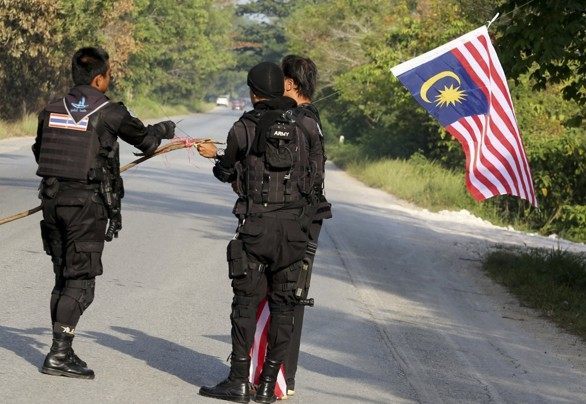
AP
At the time of writing, no one has claimed responsibility for the bombing that occurred in Thailand earlier today. But it doesn’t take a genius to figure out who might be responsible. Of six major terrorist attacks in the past 10 years, five of them have been overtly attributed to the Islamic nationalist separatist umbrella group known as the South Thailand Insurgency (STI).
Some may argue that the attribution comes from the government of Thailand, itself hardly a beacon of transparency and democracy in the region, and therefore a source not to be trusted. But independent sources have also verified that STI and its component groups have been responsible for at least 5,500 deaths between 2004 and 2014, in its bid to terrorise the Thai government into granting independent status to the region of Pattani in the south of the country.
The groups, which vary in name, all carry similar separatist sentiments, with most of the Islamic in background, and keen to see an independent nation established under Islamic law in Pattani. Reports suggest that 80 per cent of the population of Pattani province are Malay Muslims, which may go some way to explaining how the group is easily funded, and displays its large recruitment pool. The area has around 700,000 inhabitants.
STI is credited with the past few terrorist attacks, including 2005’s Hat Yai bombings which killed two and injured 66, the 2006 equivalent, in the same region, which killed four and injured 82, and the 2007 attacks in Pattani itself, killing seven and injuring 33.
And the group’s activity hasn’t stopped there. It is believed to be behind multiple, repeated stabbings, machete attacks, and shootings. This includes a 2006 attach which killed three and injured 38, a 2012 attack that injured 5 in Bangkok, and the 2012 bombing in Yala which killed 16 and hurt 321.
The groups in question include the following:
Barisan Revolusi Nasional (BRN): A Pattani separatist group that has come to use the “black flag of Islam” in recent years. The group prefers the Salafist interpretation of Islam, and is said to have split into several factions, including distinctly Islamist splinter groups which wish to create paramilitary groups. Many of the Islamist element’s leaders are reported to have been trained in Afghanistan.
Runda Kumpulan Kecil (RKK): This group is recognised as a militant Islamic group with up to 3,000 members. There is believed to be a large overlap between it and the BRN’s Islamic faction.
Gerakan Mujahidin Islam Patani (GMIP): The group started as a criminal racket, “gun running” for Islamic terror groups, but soon took on an identity of its own. It is believed to be linked to the Moro Islamic Liberation Front (MILF) – a Phillipines-based separatist movement backed by the Malaysian government. The Jamestown Foundation think tank reports: “Following the 9/11 attacks on the United States, the GMIP distributed leaflets in Yala calling for a jihad and support for Osama bin Laden.”
Pattani United Liberation Organisation (PULO): One of the most prevalent groups in the country, PULO counts itself as more secular than the other groups, despite its foundation by an Islamic theologian, and the end goal of establishing a Salafi, Islamic state in Pattani.
Barisan Islam Pembebasan Patani (BIPP): An Islamic separatist movement, believed to be the oldest of its kind. The group has only recently begun to stress its Islamic allegiance.
Jemaah Islamiyah (JI): The continent-wide umbrella group, a regional affiliate of Al Qaeda and in some instances, Islamic State. The group was proscribed by the United Nations after the Bali bombings, and has been identified as responsible for over 20 terrorist attacks in the region since the year 2000.
Insurgency movements were believed to have been broadly defeated as of the year 2000, but they have come back in a big way over the past 15 years.
This is not to say that the Thailand attack today was definitely perpetrated by one of the above groups, but the likelihood is certainly high.
Western media sources have said that no one has yet claimed responsibility for the attacks, and therefore it is not reportable who might be involved yet. But traditionally we haven’t seen large-scale acknowledgement and/or claims of responsibility in the region. When responsibility isn’t claimed, the Thailand government usually attributed the attacks to STI.

No comments:
Post a Comment